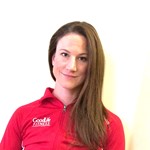Having a stomach that looks like an ice cube tray is often high on the priority list of people who regularly work out. But achieving washboard abdominal muscles can be a struggle, usually because of information overload on how to get that result.
Developing strong, defined abs is a two-part process, starting in the gym and continuing in the kitchen with a good nutrition plan.
The main target
The long, vertical muscle at the front of the pelvis that helps define a six or eight-pack is the rectus abdominis.
While it’s true you need to remove body fat so the muscle’s definition shows, you first have to build those muscles so you have something to show. After all, if you look at someone who’s skinny, they may not show any abs at all.
Step 1: Build your abs at the gym
Doing regular crunches will work the rectus abdominis and build strength and endurance in the muscle, but if you do a 100-crunch-a-day program it’s not going to be enough. Try adding these dynamic and isometric exercises into your routine to improve overall core stability and function.
Dynamic exercises
Modified crunches
The general public tends to sit a lot and that can cause lower-back discomfort. A simple modification to crunches targets the rectus abdominis and also alleviates the activation of the hip flexors.
Lie on the floor. Instead of bending both knees up, keep one leg straight out and the other bent as you normally would. Do your crunches that way, switching legs for different sets.
Rotation
Ensure some twisting exercises are included in your routine. It could be as easy as a body-weight exercise where you twist side to side or holding a light medicine ball while you’re doing that.
Advance the challenge by either increasing the weight of the medicine ball or speeding up the twists.
Isometric exercises
These work on core stability. You’re asking your body to fight a resistance that’s trying to rotate the body.
Pallof press
Attach a cable or strong band with a handle to some type of vertical pole at the height of your stomach. Stand off to the side of the post and stretch the cable so it’s coming from your right or left side straight across the body, ending with you holding the handle with both hands at your belly button. The cable should provide some resistance.
Press your hands straight away from your body and back in. The cable will try to turn you to the side, but your job is to keep your hands straight out in front of you and not allow your body to rotate.
Torsion control
While in a plank position with straight arms, slowly lift your left arm and touch your left hand to your right shoulder without letting the body move. Return your hand to the floor and do the other arm.
In this exercise, you’re shifting your balance but doing it with a lot of control so you’re not twisting your body.
Step 2: Reveal your abs through nutrition
Throughout your ab-building journey, you need to fuel your body so you can put in the work that’s required to do the exercises that build abdominal muscles. That begins with a balanced nutrition program, but one that’s individualized and not just the latest fad diet.
Even well-developed abs won’t show if there’s a layer of fat over them and that’s where nutrition is important, to keep building muscle and burning body fat. Lean protein (the building block of muscle), healthy fat and carbs, proper hydration and slow calorie reduction are key to helping you reveal the hard work you’ve done at the gym.
Your nutrition program needs to be set up for the type of exercise you’re doing, the level of energy that’s needed and your current body state.
Interpreting results
One mistake people make is assuming that someone with a six-pack is stronger and more fit than someone whose abs don’t show.
Take strength athletes, those who might toss boulders or lift cars. Their training develops strong internal and external obliques and deep stabilizing muscles, but their stomachs are usually flat and they look squarer through the midsection.
In comparison, a bikini competitor shows off a six-pack and high level of aesthetic muscles, but they’ve shed body fat and their training won’t necessarily make those muscles functionally strong.
There’s no one answer on how to get perfect abs. It really depends on whether you’re aiming for strong, functional, high-performing abdominals for athletic or everyday tasks, or whether you’re seeking a chiselled six or eight-pack for an aesthetic look.
I always encourage people to set performance results outside of aesthetic ones. That’s because performance results are the ones you’ll usually notice first.
If you’re seeing improvement in your performance, be assured your abdominal muscles are developing and then you can focus on reducing body fat percentage if you want to show them off.
It’s not an overnight process so be kind to yourself and, more importantly, be patient.
